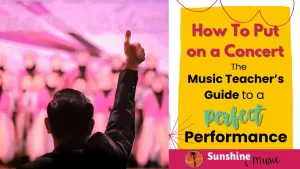Usually when teaching a new song, many teachers (including myself) start by having the class echo you in small pieces, gradually adding more until they sing the whole song. This can be efficient, but it can also be problematic. Do you ever have a song you are trying to teach to your kids, but they are just getting wiggly? Maybe you have two new songs to teach in the same day and you want to shake things up by not just having kids sit and echo you. Whatever the reason, here is a different way to try teaching a new song to your kids. I like to throw it in there sometimes, to keep things fresh and focus on some of the musical stuff BESIDES the words.
OBJECTIVES: sing a song with multiple verses, identify the meter of the song, identify the tonality of the song, move to the big and little beat with solfege, sing the resting tone on solfege
THOU SHALT NOT SING
So the main kicker to this method is that the kids have to LISTEN the first couple times you sing this. They don’t sing (even when some of them are able to, don’t let them!). There is a method to the madness. As is typical with any song you do in class, you are teaching a lot more than the words. Often we teach the words first and THEN get into the content. This method reverses that, and might actually save you some time in the process because you never have to explicit teach the words. They learn them through repetition while you focus on the other content. Then, when it’s time to sing, BAM! They are all ready because they have heard it many a time.
START WITH THE BEAT
You can have students start by sitting and tapping the big beat on their lap. I aimed this activity for second grade, where they would know the words that go with the big and little beat, but if you are doing it with younger grades, you can do the same thing, just without words. Have students chant DU (or TA depending on what syllable system you use) as they pat the beat and you sing the song. Have them stand and walk to the beat, again saying DU or TA, while you sing the song. Have them sit and tap the little beat, saying DU-DE or TI-TI, while you sing the song. Then have them stand and move to the little beat saying DU-DE or TI-TI, while you sing the song. Ask the students, since the little beat is saying DU-DE/TI-TI, what is our meter? Answer: DUPLE! You may have to give them this answer, depending on how many times they have been exposed to the concept of duple meter. It’s all good. One of the things about Music Learning Theory is taking kids a their musical level, rather than their age.
NOW YOU GET TO SING, BUT ONLY ONE NOTE!
My students would have already learned about the resting tone (first note of the scale, tonal center). Kids have just been moving around the room, so I would just have them sit, scattered around the room, and I would sing the song – maybe even taking the words out if I feel like it – depends if the melody or the lyrics is the trickier part of the song. I would roam around the room with a ball in my hand, and pause at points throughout the song to toss the ball in the air. When I catch the ball, the class would sing the resting tone. I might even pass it to individuals and have them sing the resting tone as a solo. You can sing it on a neutral syllable or on solfege, depending on what level they are at. You can even ask about what tonality it is, based on the resting tone. Singing the resting tone helps students learn the relation of each pitch in the scale, leading to more in tune singing.
SLEEP ON IT
So, at this point they have heard the song A LOT. But I would probably wait until the next class to have them sing along. Brain research shows that sleep is essential to learning. We process a lot of new things in our sleep. So then, when the students come back for the next class, I would tell them to audiate the song we heard last week – and I would also tell them our goal today is to sing the song without my help. After modeling it for them, I would put them in charge of a specific phrase, then maybe half the song, and finally the whole song.







0 Responses
This is a great way to teach a song! As Gordon would say, you always want to teach a song whole-part-whole. Repetition is a natural way to learn and keeping them from singing until they really hear it in their head prevents a lot of mistakes!
Thanks for posting, etstrab! And thanks for adding about whole-part-whole learning. Definitely an important part of the MLT process.